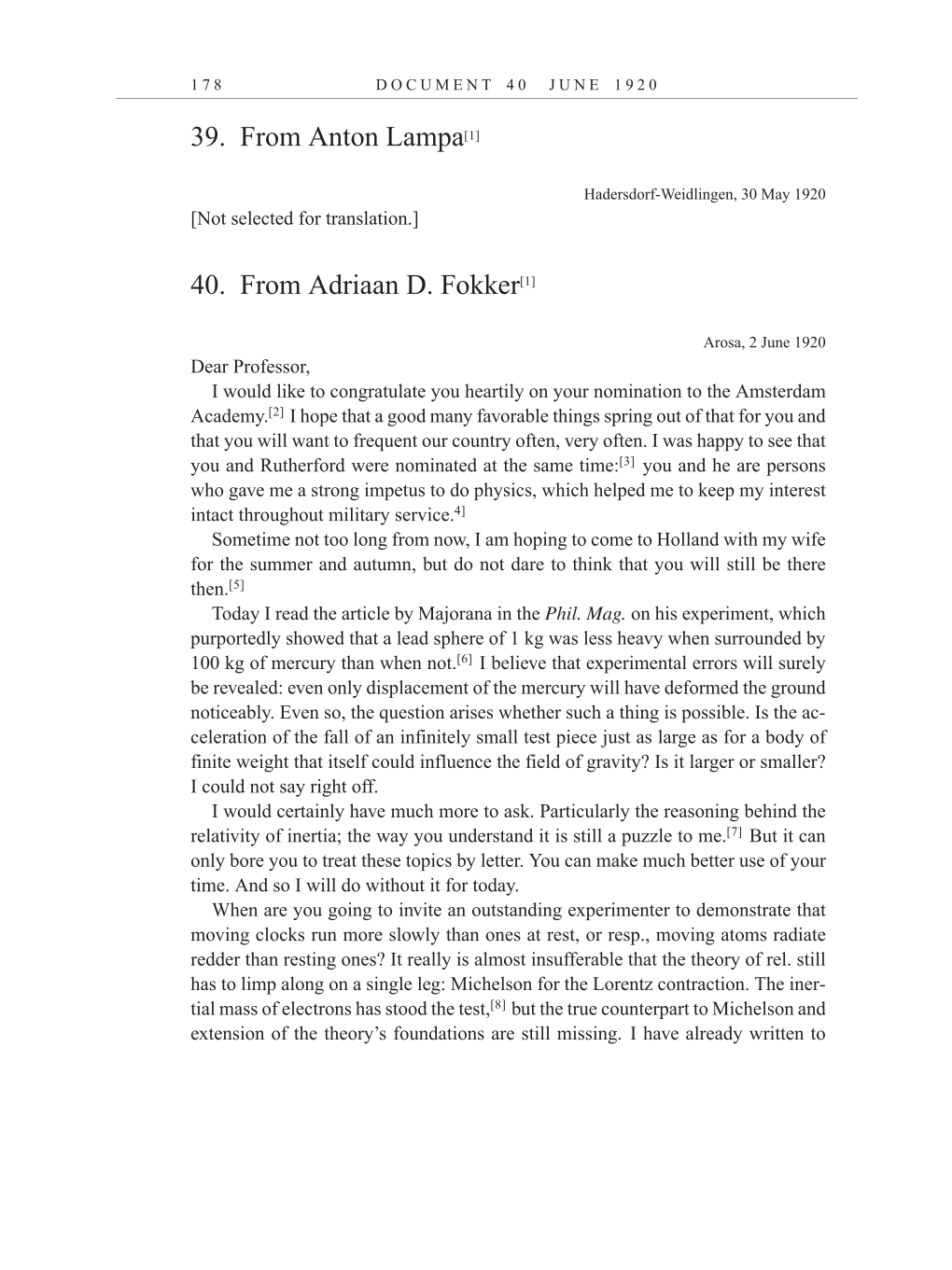1 7 8 D O C U M E N T 4 0 J U N E 1 9 2 0
39. From Anton Lampa[1]
Hadersdorf-Weidlingen, 30 May 1920
[Not selected for translation.]
40. From Adriaan D. Fokker[1]
Arosa, 2 June 1920
Dear Professor,
I would like to congratulate you heartily on your nomination to the Amsterdam
Academy.[2]
I hope that a good many favorable things spring out of that for you and
that you will want to frequent our country often, very often. I was happy to see that
you and Rutherford were nominated at the same
time:[3]
you and he are persons
who gave me a strong impetus to do physics, which helped me to keep my interest
intact throughout military
service.4]
Sometime not too long from now, I am hoping to come to Holland with my wife
for the summer and autumn, but do not dare to think that you will still be there
then.[5]
Today I read the article by Majorana in the Phil. Mag. on his experiment, which
purportedly showed that a lead sphere of 1 kg was less heavy when surrounded by
100 kg of mercury than when
not.[6]
I believe that experimental errors will surely
be revealed: even only displacement of the mercury will have deformed the ground
noticeably. Even so, the question arises whether such a thing is possible. Is the ac-
celeration of the fall of an infinitely small test piece just as large as for a body of
finite weight that itself could influence the field of gravity? Is it larger or smaller?
I could not say right off.
I would certainly have much more to ask. Particularly the reasoning behind the
relativity of inertia; the way you understand it is still a puzzle to
me.[7]
But it can
only bore you to treat these topics by letter. You can make much better use of your
time. And so I will do without it for today.
When are you going to invite an outstanding experimenter to demonstrate that
moving clocks run more slowly than ones at rest, or resp., moving atoms radiate
redder than resting ones? It really is almost insufferable that the theory of rel. still
has to limp along on a single leg: Michelson for the Lorentz contraction. The iner-
tial mass of electrons has stood the
test,[8]
but the true counterpart to Michelson and
extension of the theory’s foundations are still missing. I have already written to
